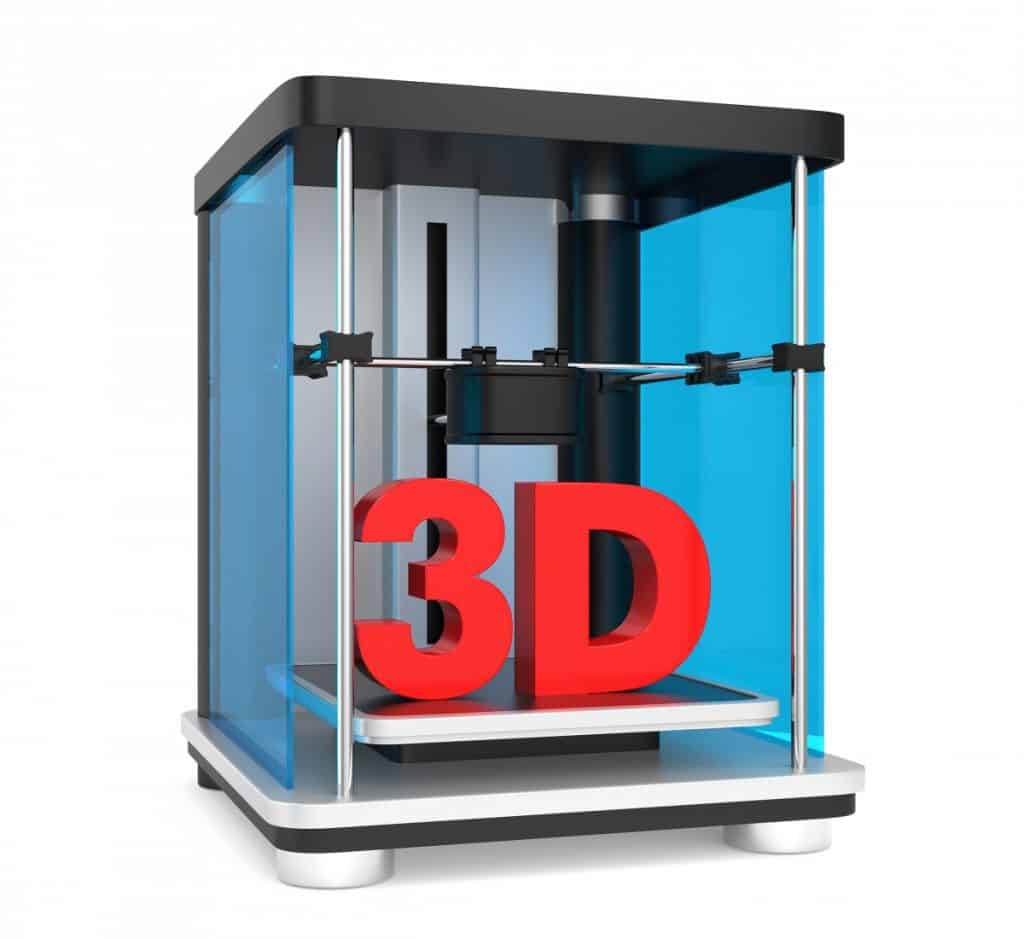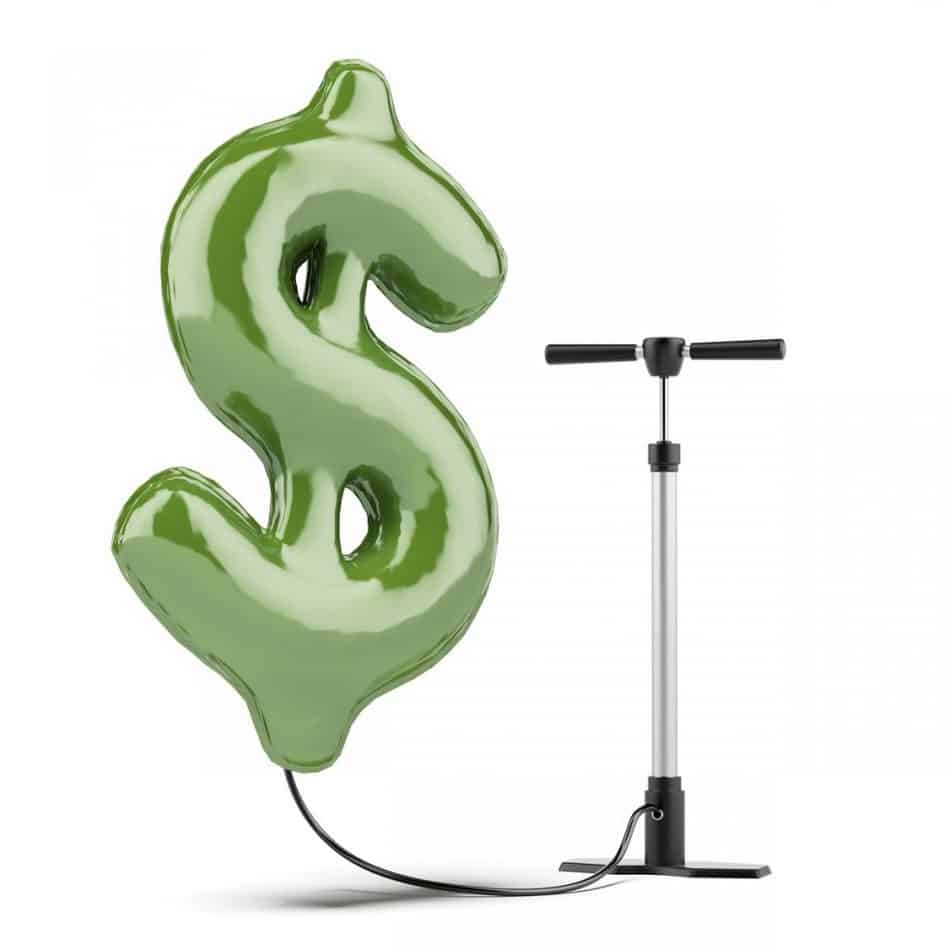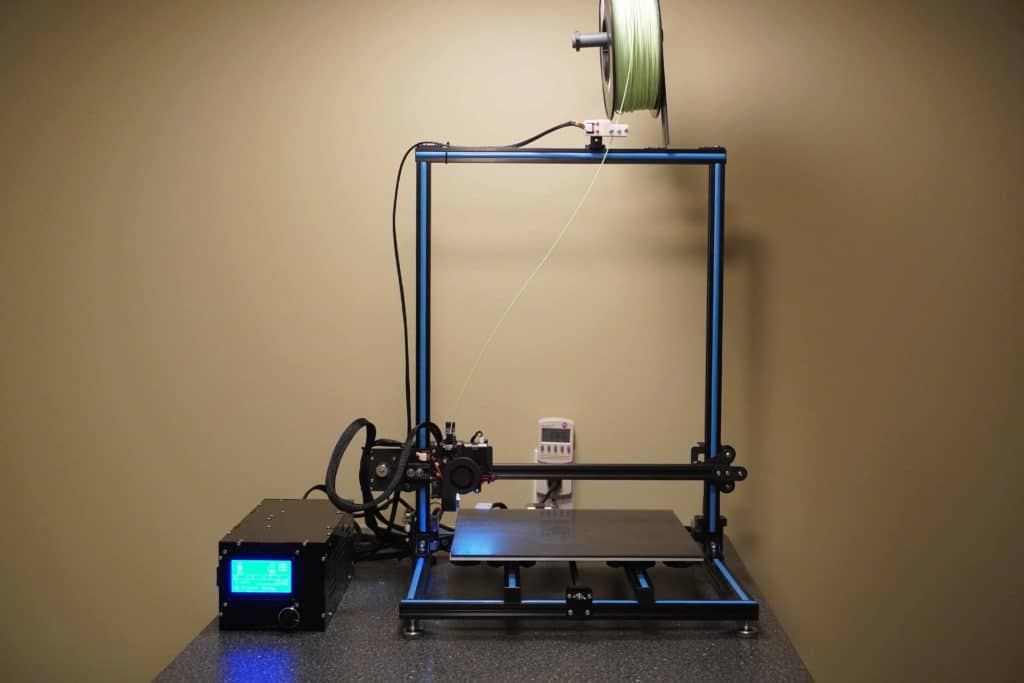
Let’s face it, when it comes to 3d printers there are so many options/features available these days that it can almost be overwhelming. I just recently picked up another 3d printer and the largest factors that impacted my decision were the size, quality, and price. All the rest of the features are just bells and whistles that I typically don’t pay attention to anyway. I ended up going with a smaller 3d printer this time and wanted to talk about why.
Smaller 3d printers can easily be overlooked but here are some reasons you may want to consider buying one. 3d printers with a small build volume tend to be more affordable, cause fewer problems, use less power, take less time to heat up, take up less space, and are perfect for smaller prints.
Now let’s talk about why it may make sense for you to buy a smaller printer when there is an abundance of larger ones available for a decent price.
Benefits of a Small 3d Printer
More Affordable
If you’re looking to experiment with 3d printing or have a limited budget this benefit will be extremely appealing to you. Typically, smaller 3d printers will cost you less than a larger one, though this is not always the case, allowing you to get into the hobby for less money.

Now I added the “though this is not always the case” caveat because I felt it was mentioning that smaller 3d printers from the same vendor will be cheaper but that’s not always the case going between vendors. This has more to do with quality than build volume and in many cases buying the cheapest opinion will end up costing you more down the road.
Less Time Needed to Heat the Build Plate
No one likes waiting for the build plate to heat up before you can start printing (especially if you are troubleshooting an issue) but we don’t much of a choice. The good thing is that the smaller the build plate is the less time it takes to heat (assuming you are only using a single heating element, which is common).

As your build volume goes up in size so does the surface area that needs to be heated. For example, a 6” x 6” build plate has an area of 36” but a build plate that is double the size (12” x 12”) has an area of 144” which is four times the area of the 6” x 6” build plate. This, in turn, will take longer to heat.
Consumes Less Power
This really goes hand and hand with needing less time to heat the build plate. The smaller the build plate surface is, the less energy will be needed to heat it to the desired temperature and keep it there throughout the duration of the print.
Larger build pates can be wasteful when it comes to energy consumption because you will end up heating the entire build pate regardless of what you are printing. So, if you are printing a benchy (a common model used to test a 3d printer) you will be heating the entire build plate even though the base of the print is only 1.5” x .5”.
If your interested in seeing how much power a 3d printer uses, you can check out the article I wrote on it here.
Smaller Footprint
One of the most overlooked factors of a 3d printer is the actual physical size. When people start shopping for them, they focus on the max build volume and not so much on the size of the printer itself. I can tell you from experience that you need a lot of space than you would think.
My Taz 6 printer has an 11” x 11” build plate but uses up a 26” x 26” space and it was difficult to find a space that large for the printer. With a smaller printer, you won’t have that issue. It’s much easier to find a somewhere too but a printer that only needs 12” x 12” of space.

Great for Smaller Prints
I almost left this one out of the article but thought it may provide some value as its commonly overlooked. Smaller 3d printers are great for people who mostly only print smaller objects. In many cases, they can print quicker, use less power, and provide an overall better print.
This is not always the case but when you are comparing a smaller 3d printer to a cheaply made larger one it defiantly is. That’s because larger printers tend to use cheaper materials on the frame to reduce the cost but this causes a lot more vibrations that end up affecting the print.
*Disclaimer: I’m not saying all larger printer manufacturers do this, there are great companies out there that make fantastic products but you will pay more for them.
Tend to Cause Fewer Problems
I hinted to this above but smaller printers tend to cause fewer problems than larger ones. The larger the printer is the more things like build plate movement, extruder movement, and vibrations need to be accounted for. These can easily be accounted for with high-quality frames and components but many cheaper printers opt to not take this into consideration.
There are things you can do to help (such as reinforce the gantry) but if you’re wanting your printer to just work well out of the box it’s going to cost you. Ultimately, it really comes down to what you are looking for.

Disadvantages of a Small 3d Printer
Limited Build Volume
In my opinion, the only disadvantage of a small 3d printer is the limited build volume. If you the type of person that wants to be able to print anything you come across on thingiverse then a small printer isn’t going to work for you. If you are looking to get into the hobby and/or just have fun then you will probably be ok with a smaller printer. It really comes down to what you plan on doing with the printer.
I personally have had both and honestly, I like to own one of each. I like the flexibility of being able to print anything I want with my large printer and the option to print smaller things on my small one. One other advantage of have both sizes (or just two printers in general) is that I can go print something for my kids, or a part I need, on the small one while my larger in is in the middle of a long print. I hate being 40+ hours into an 80-hour print and want to print something for my kids that won’t take long at all (this is actually why I bought a small printer to begin with).
Recap
Smaller 3d printers can be easily overlooked but there are some reasons you may want to consider picking one up. 3d printers with a small build volume tend to be more affordable, cause fewer problems, use less power, take less time to heat up, take up less space, and are perfect for smaller prints but there is one glaring disadvantage as well that you need to consider.
That said, once you get more into the hobby you may want to consider having a couple of printers so you can print multiple smaller parts without having to mess with a long-running print.
Make sure you check out our YouTube channel, and if you would like any additional details or have any questions, please leave a comment below. If you liked this article and want to read others click here.
